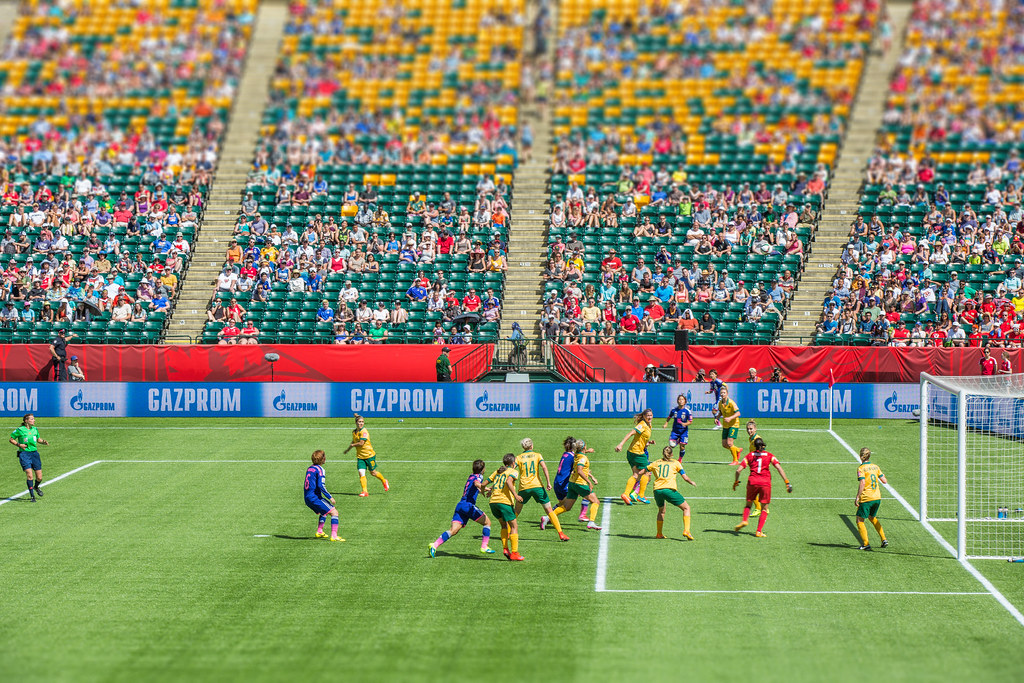Tech in the 2023 World Cup
The realm of soccer has been no stranger to technological advancements in recent years. The introduction of semi-automated offside technology, coupled with ball-tracking systems and various other innovations, has significantly impacted the accuracy and efficiency of referee decisions in the most prestigious soccer tournaments such as the Fifa World Cup. As the stakes continue to rise, the need for precise and swift calls has led to cutting-edge technologies to ensure fair play and eliminate contentious calls.
Semi-Automated Offside Technology: A Game-Changer
Offside decisions have been a longstanding source of debate and controversy in soccer. The introduction of semi-automated offside technology aims to mitigate these controversies and enhance the accuracy of such calls. This technology employs advanced camera systems and computer algorithms to detect offside situations down to the millimeter. By overlaying virtual lines on the field, officials can swiftly determine whether a player is offside, minimizing human error and avoiding game-changing calls that hinge on mere centimeters. In past World Cups, semi-automated offside technology has provided referees with instant visual aids to make precise decisions. This technology has been especially crucial in tight matches where goals can be pivotal, eliminating the delay caused by manual reviews and ensuring that crucial decisions are made promptly. Additionally, fans can now witness these close calls in real time, fostering transparency and understanding among both players and spectators.
Ball-Tracking Systems: Aiding Referee Vision
The evolution of ball-tracking systems has revolutionized the soccer viewing experience and referee decision-making. With cameras and sensors placed around the field, these systems accurately trace the ball’s trajectory, speed, and movement. Not only does this advancement benefit viewers by providing captivating visualizations but also supports referees in determining crucial factors such as goal-line clearances. This technology has proven essential in this years Women’s World Cup during the recent USWNT game against Sweden. During the penalty kicks USA goalie, Alyssa Naeher, thought she saved the ball from entering the goal during her second attempt. However, due to the ball tracking system, officials declared that the ball had barely crossed the line resulting in Sweden’s victory. The implementation of ball-tracking systems has significantly impacted the adjudication of goals and continues to instill a sense of fairness and justice in the game.

Technology helps determine close calls throughout the 2023 World Cup.
Video Assistant Referee (VAR): A Pinnacle of Precision
While semi-automated offside technology and ball-tracking systems have played pivotal roles, the introduction of the Video Assistant Referee (VAR) system has been the pinnacle of precision in soccer officiating. VAR allows referees to review footage of specific incidents, including goals, penalties, and red card decisions. This technology empowers on-field referees to make more informed judgments and correct them when calls are under question. During the Spain V.S Netherlands match in this year’s World Cup, we saw much debate circulating about a yellow card given to a Spanish, resulting in what would’ve been a penalty kick for the Netherlands. After review from VAR, the call that had the potential to change the entirety of the game was overturned. By providing referees with multiple camera angles and slow-motion replays, VAR facilitates accurate decisions and upholds the integrity of the game.
Conclusion
The integration of semi-automated offside technology, ball-tracking systems, and VAR in this year’s Fifa Women’s World Cup has ensured precision and fairness throughout the tournament. These technological advancements have enhanced the accuracy of critical decisions and contributed to the overall integrity of the sport. As fans and players anticipate future World Cups, they can rest assured that technological innovations will continue to elevate the game, guaranteeing that matches are determined by skill, teamwork, and the thrill of competition, rather than contentious calls or human error.









